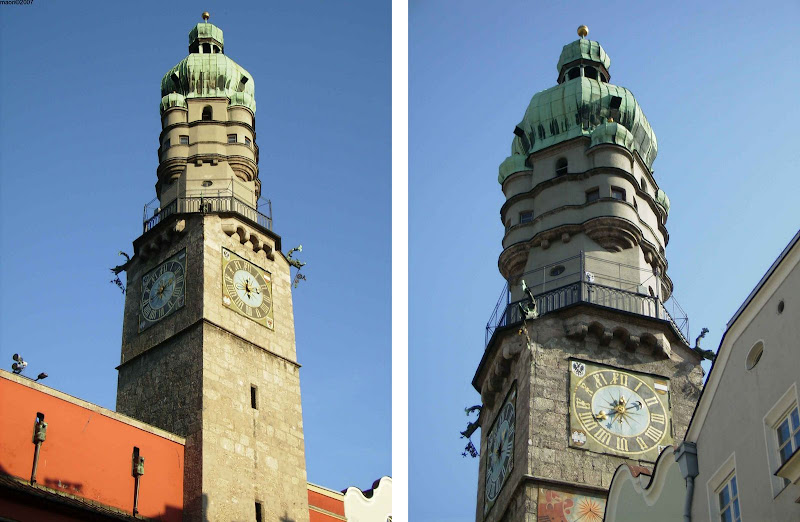I will always remember my first visit to Innsbruck in 1992. Unable to find accomodation in Florence, Italy then, we decided to take a overnight train to Innsbruck. However, as the final destination of the train was Munich, I was unable to sleep and kept alert all night just in case we miss the Innsbruck stop. We arrived at Innsbruck still dark, hungry and cold. When the sun arrived and I stepped out of the train station, the moment was truly unforgettable. Here I was, in a beautiful city surronded by beautiful mountains.
Now here I am again back in Innsbruck, and of course arriving much more comfortably.
1. We started our stroll of the city from the train station where we parked the car. After a short walk and a turn, here is the beautiful scene in front of our eyes, the Trumphpforte with mountains in the background.
2. The Triumphpforte was built in 1765 to commorate the betrothal of Leopold II to Maria Ludovica. But his father, Francis I died during the celebrations. Hence one side of the arch symbolises the joyful aspect of the event, the other the sadness.
3. Buildings along the Maria Theresien Strasse. The building on the left houses a chinese restaurent, where we had our dinner.
4. The Spitalkirche near the end of the Maria Theresien Strasse. The small street between the buildings on the right of the photo leads to the Goldenes Dachl.
5. The Goldenes Dachl is the most famous landmark of Innsbruck. It was built in 1420 as the residence of the Tyrolean sovereigns. A loggia was subsequently added over an oriel window and covered with 2657 fire-gilt copper tiles. The work was completed in 1550.
6. The Helbinghaus, on the left of the Goldenes Dachl, is originally a Gothic town house dated from the 15th century. In 1730, the facade was decorated with late-baroque stuccoes.
7. Close up view of the Goldenes Dachl. One can see the Frescoes on the oriel and in the loggia, as well as coat-of arms and reliefts.
8. Built in 1440, the tower of the Stadtturm has a 16th century bulbous cupola.
 |
9. The Dom St Jakob, with beautiful ceiling and stucco works.
 |
10 & 11. Basilika Wilten. The exterior looks ordinary. But inside are impressive ceiling paintings and stucco works.
 |
 |
No comments:
Post a Comment